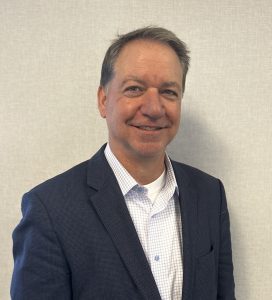 The data center industry continues to evolve rapidly, and that creates opportunities for new providers to come in and shake things up. Prime Data Centers is one of those young companies looking to make their mark, starting on the West Coast of the U.S. but already looking at international opportunities. With us today to talk about their approach to the market is co-founder and CEO Nicholas Laag.
The data center industry continues to evolve rapidly, and that creates opportunities for new providers to come in and shake things up. Prime Data Centers is one of those young companies looking to make their mark, starting on the West Coast of the U.S. but already looking at international opportunities. With us today to talk about their approach to the market is co-founder and CEO Nicholas Laag.
TR: What are the origins of Prime Data Centers?
NL: Prime was founded four years ago, by myself and two partners. We had been doing business for 14 years together in real estate. We decided jointly, on my initiative, that we wanted to set up a data center business firstly in the US and eventually Europe, by either investing in and taking control of a smaller platform or starting from scratch. We started from scratch in 2016 on the West Coast, because it’s still the biggest exporter of data center demand. I spent a 12-month period going back and forth, meeting people in the industry, and getting closer to the prospective customers. I also started snooping around for an opportunity in Santa Clara, but then one popped up in Sacramento, which became our first project. It had a 50 MVA substation, and it had land to expand and was a market with both local demand and the ability to serve the needs of the Bay Area. That was our first project, and now we have a handful of projects that we’re developing.
TR: What types of customers and opportunities are you targeting?
NL: We refer to our strategy as partnership-as-a-service, and we have two arms. One is as a fully integrated developer and operator serving the needs of enterprise and hyperscale customers with multitenant or build-to-suit data centers. We will have retail customers indirectly in that we will serve tenants that are retail colo providers, but we are not in the retail colo business ourselves. The other arm buys cash-flowing assets. There is a need to serve enterprises in a strategic manner, allowing them to free up capital while working with them as they transition from on-premises to off-premises. We acquire those facilities and take over operational responsibilities. We have closed on one facility, and we have three more that we hope to announce in January or February.
TR: What drew you to Sacramento as your first market?
NL: Sacramento is really an interesting market for the West Coast. It is significantly closer to the Bay than Hillsboro, Quincy or Phoenix in terms of latency, and its cost of power is really very competitive. So if you are a company in the Bay area with latency-driven requirements and you don’t need to be close to your existing offices, Sacramento has nearly 100MW and is growing 5-8MW per year. If you look at the requirements from cloud providers for disaster recovery or data replication services, but in a more seismic-neutral area, it’s an interesting complement to the Bay. A lot of prospective customers aren’t even thinking about Sacramento and the benefits it has.
TR: You are currently building a new facility in Santa Clara, what drew you to that market?
NL: As I mentioned, we have always been looking at Santa Clara. It’s a very tight market in which it is difficult to secure the right type of land. You’re not competing only against other data center operator projects; there is a shortage of residential, so you’re competing with residential developers as well. So when this opportunity arose, we jumped at it. The location is pretty much in the middle of the data center alley in Santa Clara, and the fabric of connectivity is great. We prefer Santa Clara versus San Jose or other counties in the area because it’s served by Silicon Valley Power rather than PG&E for reasons based firstly on pricing and secondly on reliability.
TR: What makes power cheaper in this case?
NL: California is a regulated market in terms of power, historically. In northern California, PG&E is pretty much the dominant player, but there are certain other pools. For example, Sacramento is served by SMUD, which is the cheapest and probably the greenest power in California. And in Santa Clara, SVP was independent and stayed independent in terms of power sources, although, of course, they partner with PG&E when it comes to the grid. They just have a more affordable source of power.
TR: What other markets in the US and beyond interest you, and why?
NL: When we’re looking at markets, we really focus on where our customers want to be. We will serve them wherever they need us to be. In terms of our own developments, we focus on where we might expect build to come into the market. For example, Santa Clara, Virginia, and Chicago are markets where we’re confident today in terms of demand and supply. In Germany, Frankfurt and Munich are markets where we see sufficient demand and not enough future supply. When we underwrite a project, and we buy the dirt, we obviously try to pre-lease it. But at the same time, when you’re working on a project and going through the entitlement process, you only have a select number of customers that will entertain a pre-lease discussion at that early stage. Once you’ve finished the project, you open the chest to thousands of prospective customers. So we always underwrite worst-case scenarios where we’re going to finish the project with or without an anchor tenant or a pre-lease, and we only feel comfortable doing that in what we refer to as our primary markets. Dallas and Phoenix are good markets with robust demand, but at the same time still have a huge amount of supply. Unless we had an anchor tenant or a customer request, we wouldn’t go and build a larger facility there.
TR: How do you view M&A in this market? Is consolidation a viable path to growth right now?
NL: Absolutely. On the one hand, we are consolidating by buying existing facilities right from enterprises and building up our balance sheet and our portfolio of assets that serve different requirements from enterprises. In terms of consolidating through acquiring companies, we’re actually looking at a smaller one in Germany. We are always open to expanding through acquisitions with the right type of group with the right people. But the chemistry has to work, because acquiring a business can have destabilizing effects if you don’t integrate properly. We are not an institutionally owned or publicly quoted company, we are still privately entrepreneurial owned, and our senior management are also owners in the company. So we do focus more on organic growth.
TR: How has the COVID-19 pandemic affected you this year? Has it caused your plans in Santa Clara to evolve, or impacted your supply chain?
NL: It certainly affected the entitlement process with the county, and things have taken longer. We are happy to have come to where we are, but we do wish we were further ahead. We were already in the COVID era when we started, so there hasn’t been much effect there. They were already taking into account the restrictions, and there are contingencies in place, of course. If the distance you can have between the people working at the site increases even more, that could slow things down. With regards to the supply chain, what we’ve seen actually is the prices have come down a bit. And for major equipment, there has been no increase in lead times. I think that’s just demand/supply since the economy is slowing down, and inventory is building up.
TR: You mentioned serving retail colo through partners. What balance do you strike between the wholesale model and more managed type services?
NL: We really focus on wholesale and on enterprises needing half a megawatt and greater. We really provide “ping, power, and pipe” and are not focused on managed services. We can do cross-connects and possibly smart hands, but we’re not there to install a couple of racks. It’s really delivering to the PDU, and then the customer basically takes over. When it comes to retail colo needs, we master lease to a retail colo provider. Everything that comes to us that is below 500MW or so we allocate to our partner. It’s good for them, and it’s good for us because then they need more space. It’s a good solution in our view because we will never compete with them. One drawback of the consolidation we’ve seen in the market is that larger retail colo operators that have consolidated are now essentially landlords to their competition.
TR: What do you see ahead of you in 2021, and what challenges are you preparing for?
NL: Our focus is on the development side and executing on the current projects we have, both the second one in Santa Clara as well as on the East Coast and Germany. We are also adding more resources toward leaseback transactions to be able to expand that footprint together with our partners. We have many projects and lease negotiations, and it all basically needs to be done yesterday. One, in particular, we’re working on could lead to a relationship that is close to 25 megawatts. That would have a huge impact on us as a company and is very intensive. We just need to be certain that we deliver and that there aren’t any roadblocks. We have the execution and implementation of the build-out: ensuring that it’s coming in time and taking into account potential bottlenecks or issues with the permits and so forth. We want to be sure not to over-promise and under-deliver, but rather the opposite.
TR: Thank you for talking with Telecom Ramblings!
If you haven't already, please take our Reader Survey! Just 3 questions to help us better understand who is reading Telecom Ramblings so we can serve you better!
Categories: Datacenter · Industry Spotlight






Discuss this Post